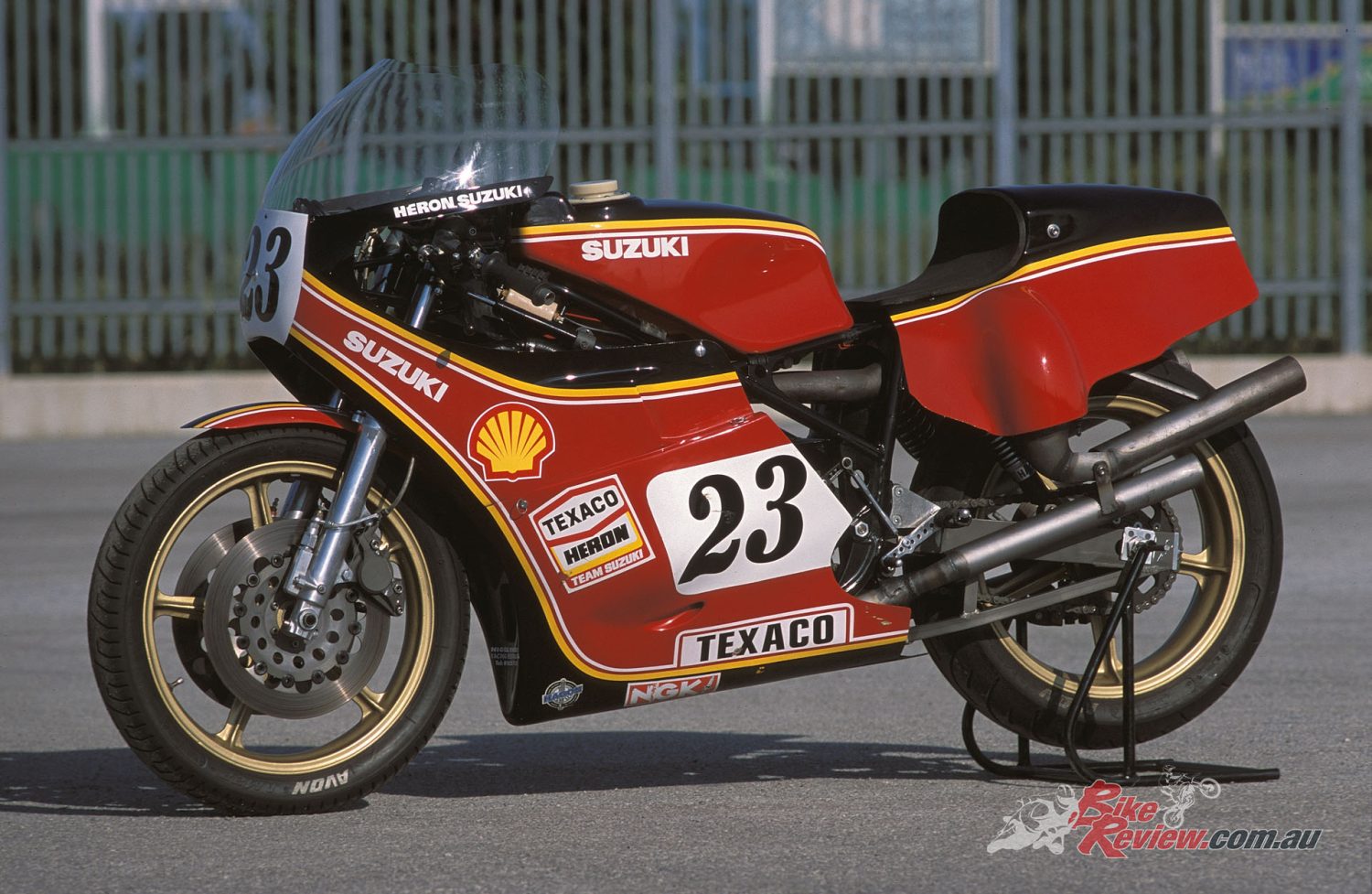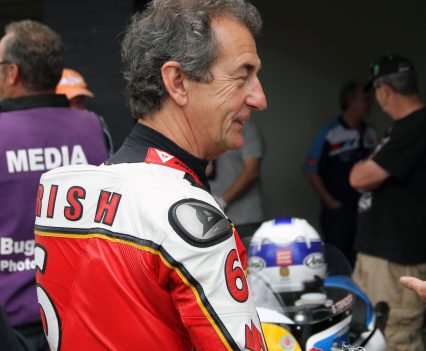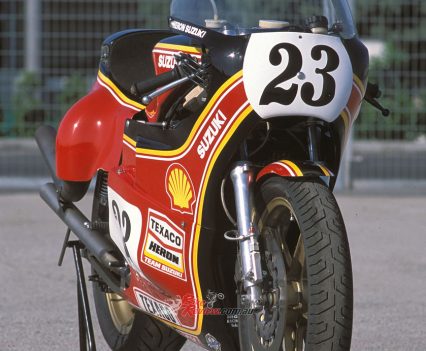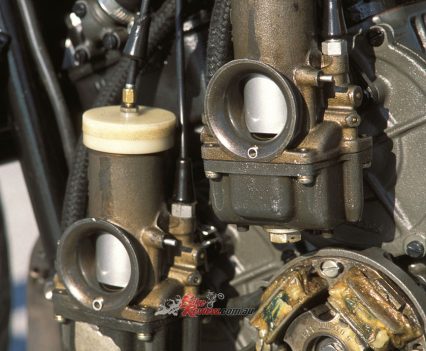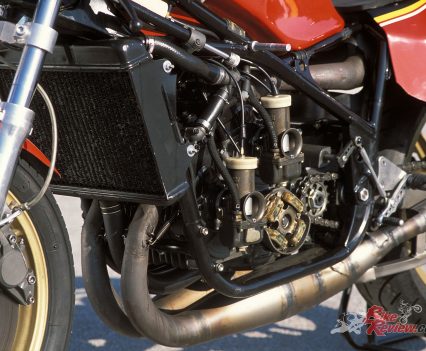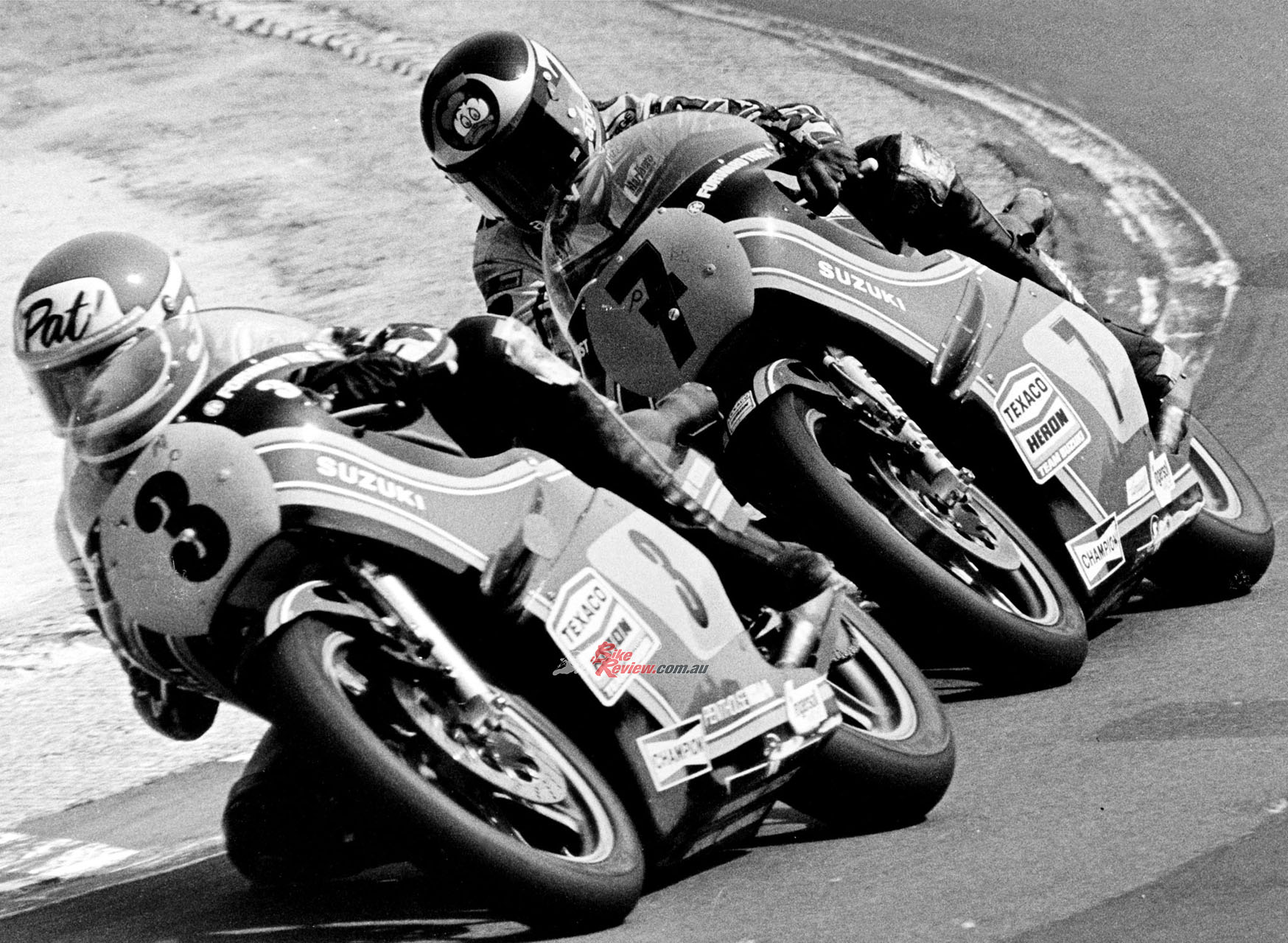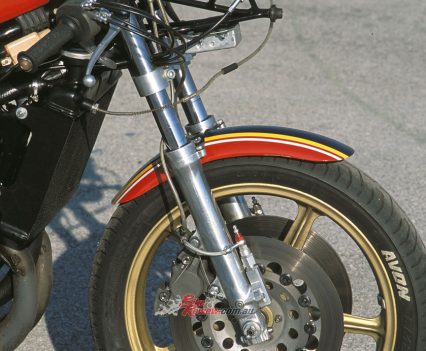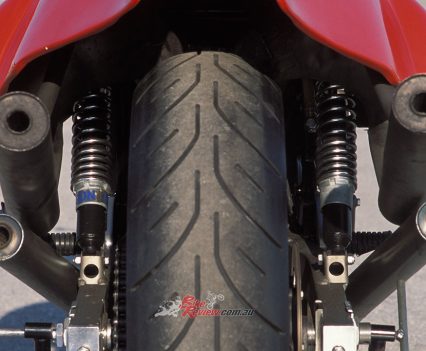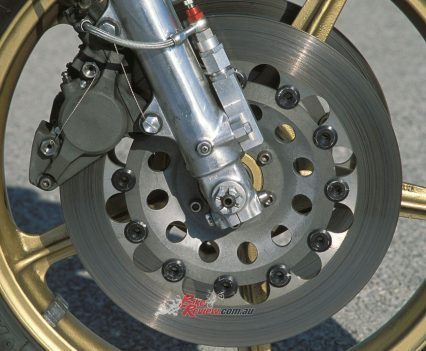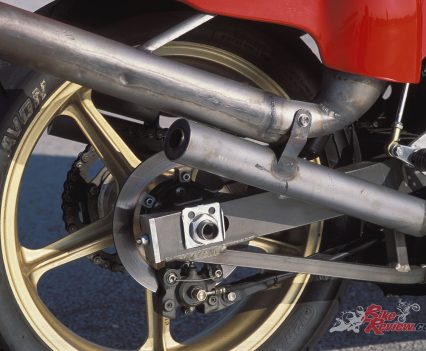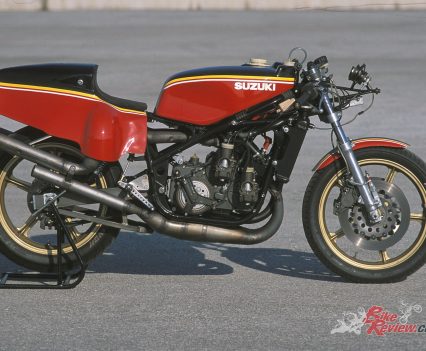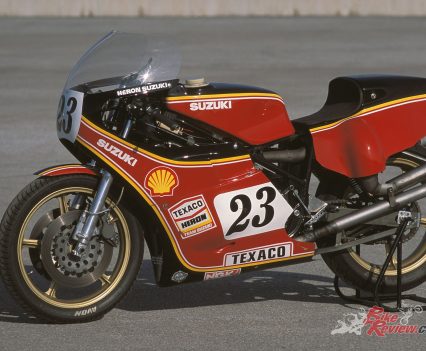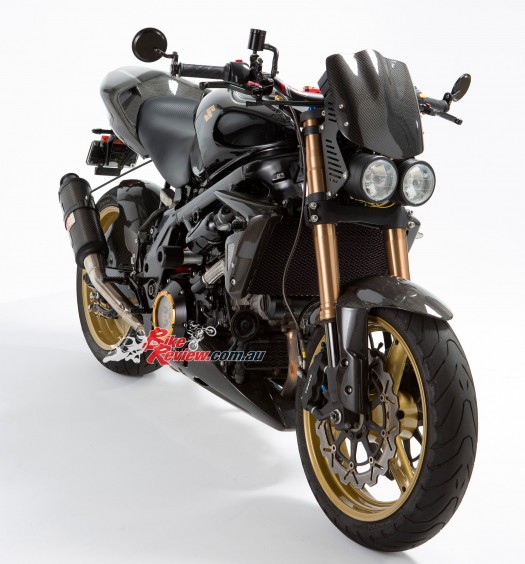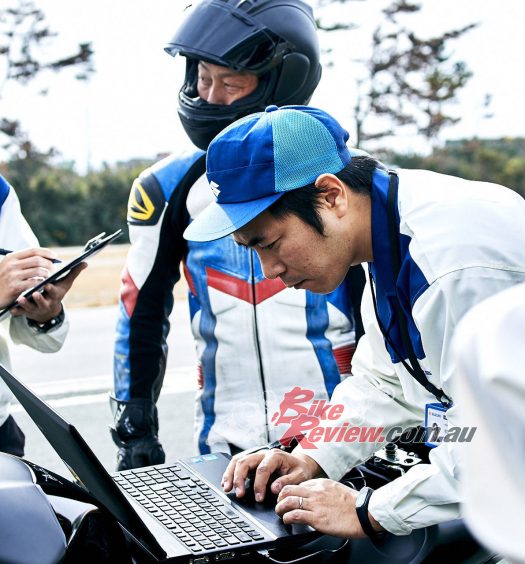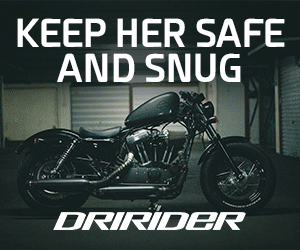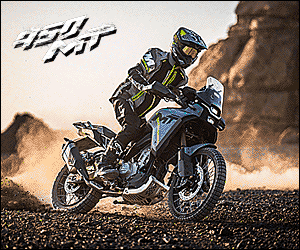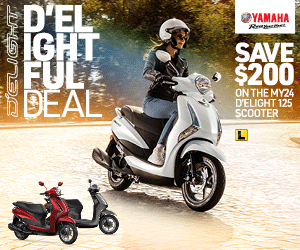The Suzuki XR23 was an insane bike... Cathcart spoke with racing legends Barry Sheene, Randy Mamola and Steve Parrish about how they found this wicked machine... Statics: Kyoichi Nakamura.
Talking to the men who grappled on the racetrack with the 652cc Suzuki XR23 in its various guises, elicits a variety of reactions ranging from satisfaction to disgust. It is certainly a beast of a bike that blew away it’s competition… Here’s a selection of Suzuki souvenirs.
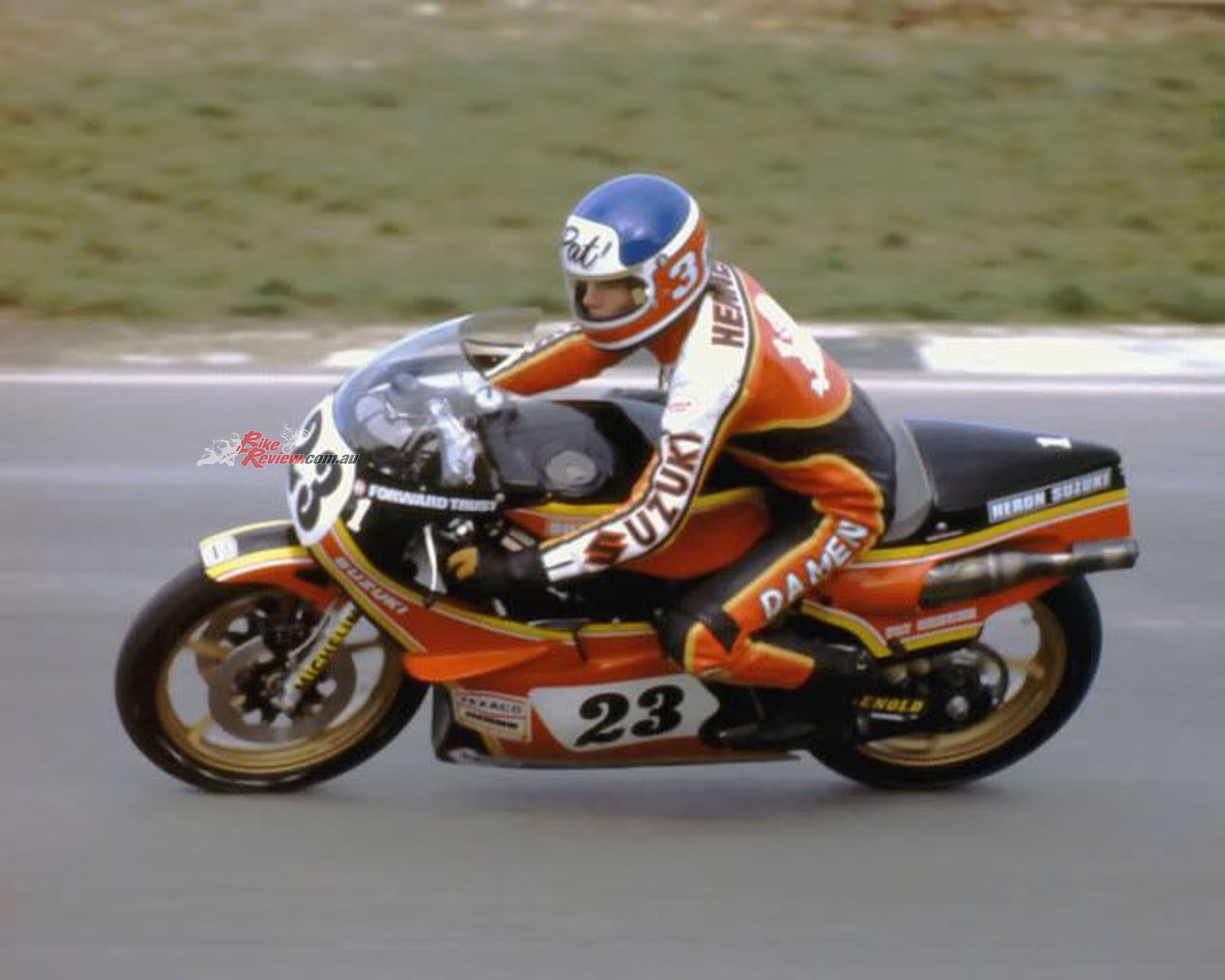
Cathcart spoke to the men who grappled on the racetrack with the 652cc Suzuki XR23 in its various guises, eliciting a variety of reactions ranging from satisfaction to disgust…
Check out the racer test and history of the XR23 here…
Randy Mamola: “First time I saw one was when I was living and racing in Italy, in 1979,” he recalls. “I was at the Formula 750 World Series race in Mugello, and they brought out the Olio Fiat RG700 with Virginio Ferrari on it. It had huge power, and he left everyone behind going down that long front straight and up the hill like they were parked in neutral, but it was shimmying the handlebars every lap at something like 300km/h – real tankslappers. So then I signed for Heron Suzuki for 1980, and the first race I did was the Transatlantic Match Races, where you used the biggest bike in the garage, which in our case was the RG700. Well – I’m a 20-year old kid, I’ve just signed my first factory contract, here’s this thing with that big seat and the huge exhausts on it, and I’m thinking, wow, man, this thing is bitchin’ – and it was!”
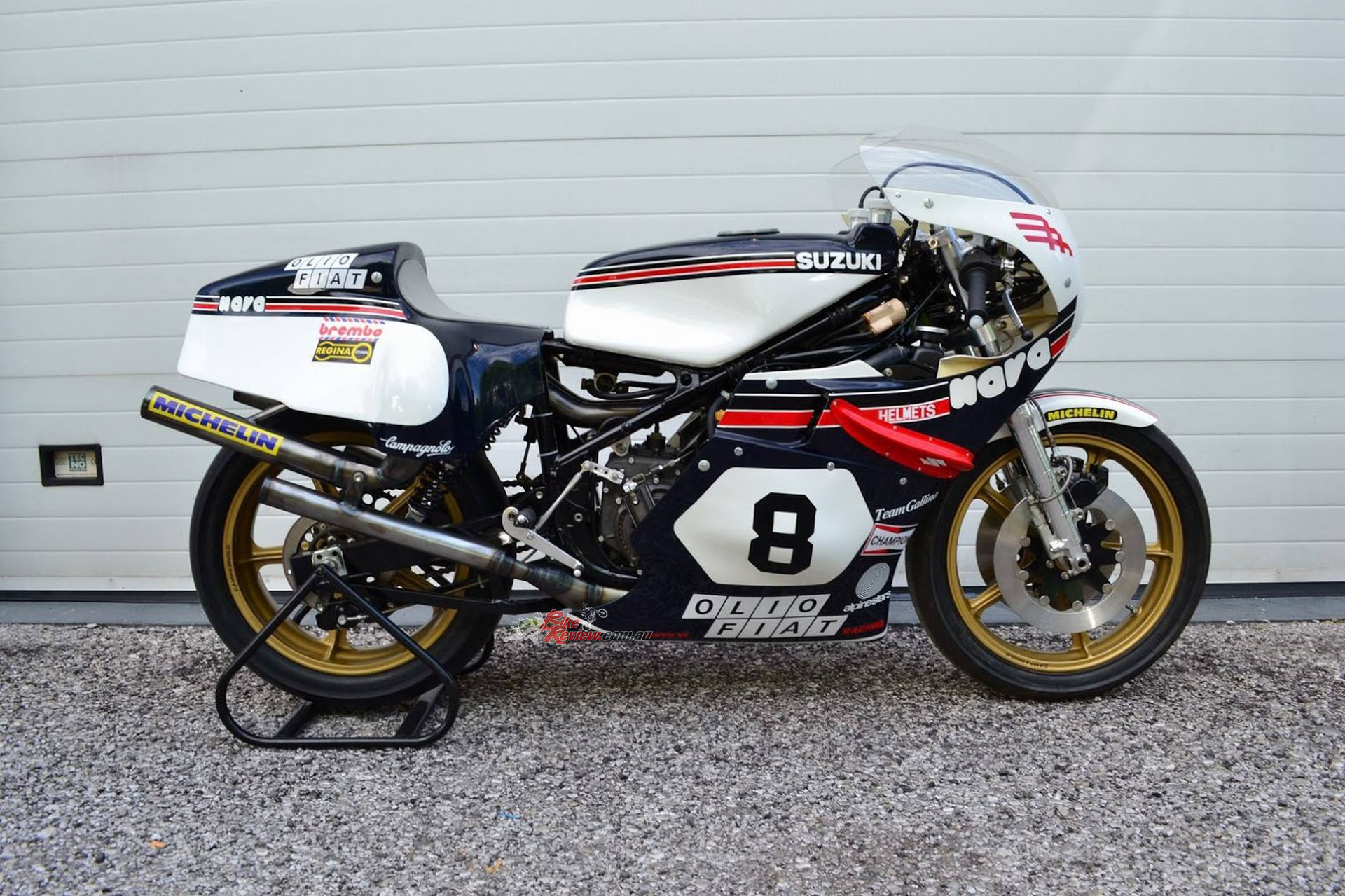
“The RG700 took me to another level of racing, but the first Match Races round was at Brands Hatch, which is a wheelie course, anyway – it’s the nature of the track that you’re going to lift the front wheel, and the RG700 really liked to do that”
“The RG700 took me to another level of racing, but the first Match Races round was at Brands Hatch, which is a wheelie course, anyway – it’s the nature of the track that you’re going to lift the front wheel everywhere, and the RG700 really liked to do that, like a LOT! It was really hard to use the power on that sort of track, though if we’d had modern electronics and today’s tyres back then, it would have been a lot easier to ride. But after just one race I could see this was going to end badly, so I parked it and switched to the 500, which was already quite fast enough, and handled properly as well. I never rode the RG700 again – once was enough!”
Someone without the luxury of discarding the XR23 maxi-moto was Steve Parrish, constrained to ride one throughout his career as a Heron Suzuki works rider – mostly because teammate Barry Sheene liked the bike so much, and what was good enough for Bazza was more than good enough for Stavros, so the reasoning went. Fifth place in the UK’s MCN Superbike Championship in both 1977 (the XR23’s debut season) and 1979 (the year of the XR23B, with its so-distinctive exhaust pipe arrangement) was more a question of survival than anything else, as Steve recalls today.
Steve Parrish: “A better name for it would have been the ‘collarbone cruncher’, because it did a good job of trying to finish off my career, as well as lots of other people’s. I hated the thing, and it’s not as if I went much faster on it than I did on the 500 – in fact, we ended up putting an oversize piston in one cylinder on the RG500, and Barry did the same, so as to make it over capacity and therefore eligible for the 750 class, where there was a 501cc-and-up rule to discourage people winning with smaller bikes in F750 like the TZ350 a few years before.”
“A better name for it would have been the ‘collarbone cruncher’, because it did a good job of trying to finish off my career, as well as lots of other people’s.” said Steve Parrish.
“For some reason Suzuki had decided to make it two inches shorter than the RG500 – I have no idea why, maybe they ran short of material for the packing cases – and then in ’78 they stuck those ridiculous exhaust pipes on it, as if the rider was just an unfortunate addition who wasn’t expected to feel in any way comfortable on it. I’ve still got a pair of Gaerne boots at home with the heels chamfered off which I had to wear to ride the awful thing – you’d smell burning rubber, but it was your boots that were on fire, wedged up against the exhausts. It had loads too much horsepower for the tyres, and really the only reason they made it was because Barry said he wanted more horsepower to compete with the TZ750 Yamahas, so they gave him this monstrosity.”
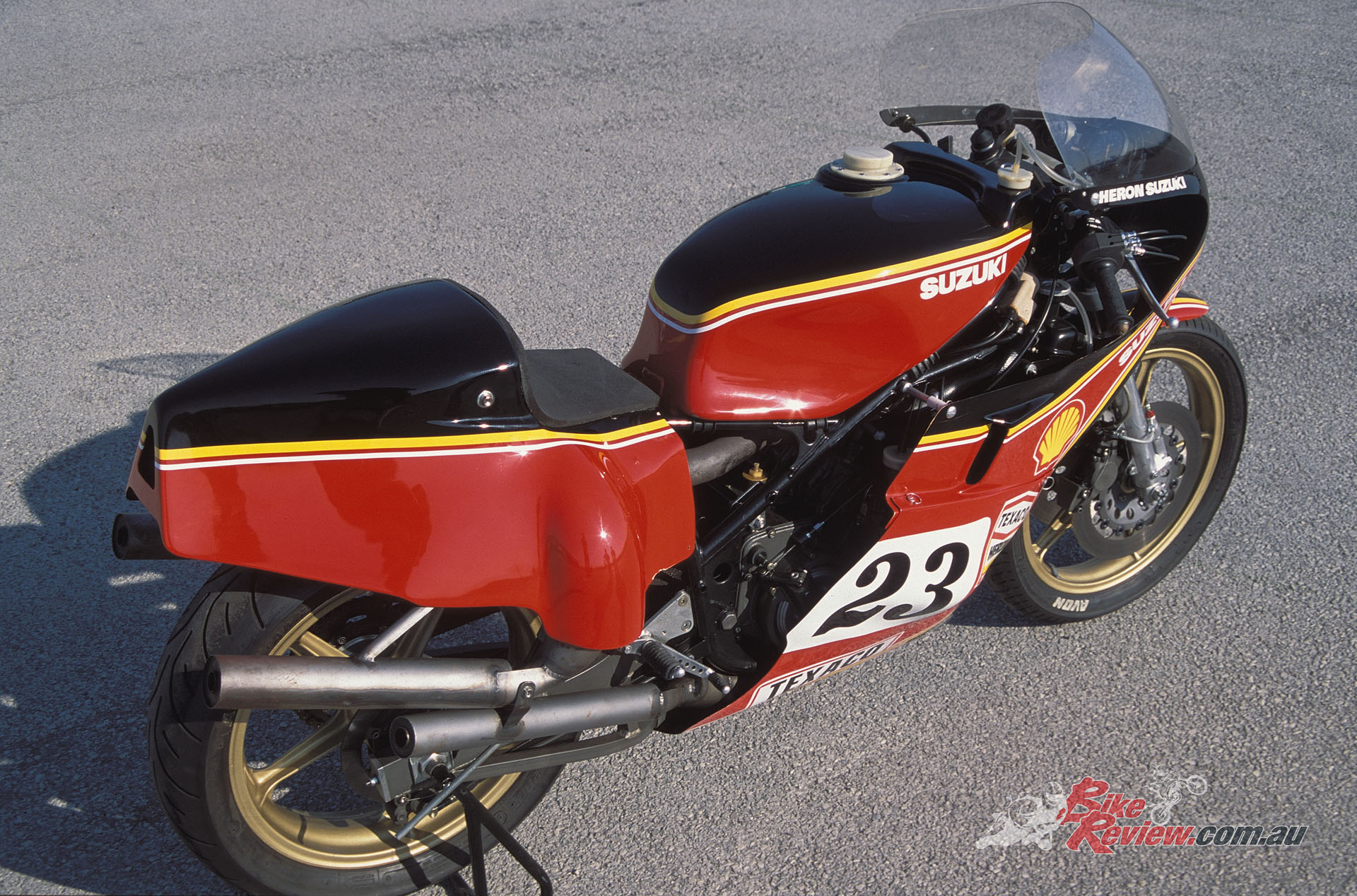
A common complaint with the Suzuki XR23B were the exhausts. Their routing to help quieten the bike caused an awkward leg and foot positioning.
“First time I rode it was at Snetterton one cold, dank March morning, and I distinctly remember hooking fourth gear just past the finish line, and the front wheel came up in the air big time – it was always on the back wheel everywhere, and from that day on, I guess I was just a coward with it. My mechanic Martin Brookman and I devised a way of countering this, by hanging a great big piece of cast iron tubing over the front exhausts, under the radiator. That was much to the disgust of all the Japanese mechanics, but in fact Barry used to borrow mine to hang on his own bike when I wasn’t riding, and in the end we made him his own to stop him pinching ours!”
“It was a complete triumph of power over handling, and I’m very glad to have survived it more or less in one piece – I have lots of memories of this bike, all of them bad. It liked to spit out primary drive gears, and I was actually leading a race on it at Donington Park when it did just that going down Craner Curves, which I ended up negotiating backwards on my arse after it locked up and covered the rear tyre in oil. Another time at Brands in the Powerbike meeting one year, I came out of Clearways and highsided it into the barriers, and had barely got up when Tom Herron landed right beside me having done exactly the same thing on his RG700. We both broke our collarbones within ten seconds of each other, at the same turn on the same bike for the same reason – too much power, too suddenly, on a nasty old contraption that hadn’t been properly thought out, and was no fun to ride, irrespective of what Barry thought.”
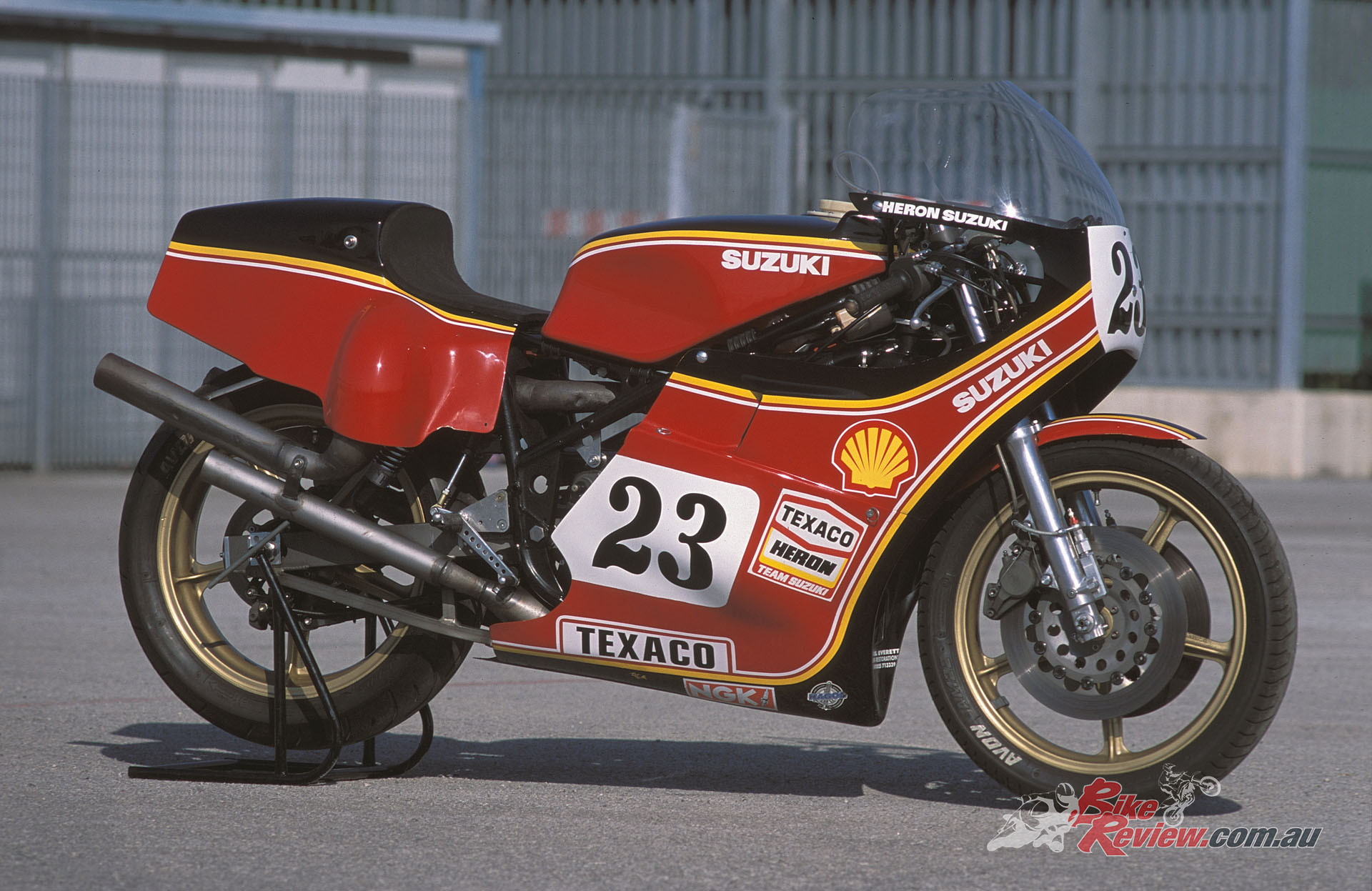
“The XR23B was a nasty old contraption that hadn’t been properly thought out, and was no fun to ride, irrespective of what Barry thought.” said Steve Parrish.
The first time I rode Chris Wilson’s then-freshly rebuilt XR23B, at Montlhéry in 2001, Barry himself was there that weekend as my ‘teammate’ aboard his 1975 Dutch TT-winning XR14, another star Suzuki in the Wilson collection back then, and kindly took a trip down memory lane for the benefit of my recorder.
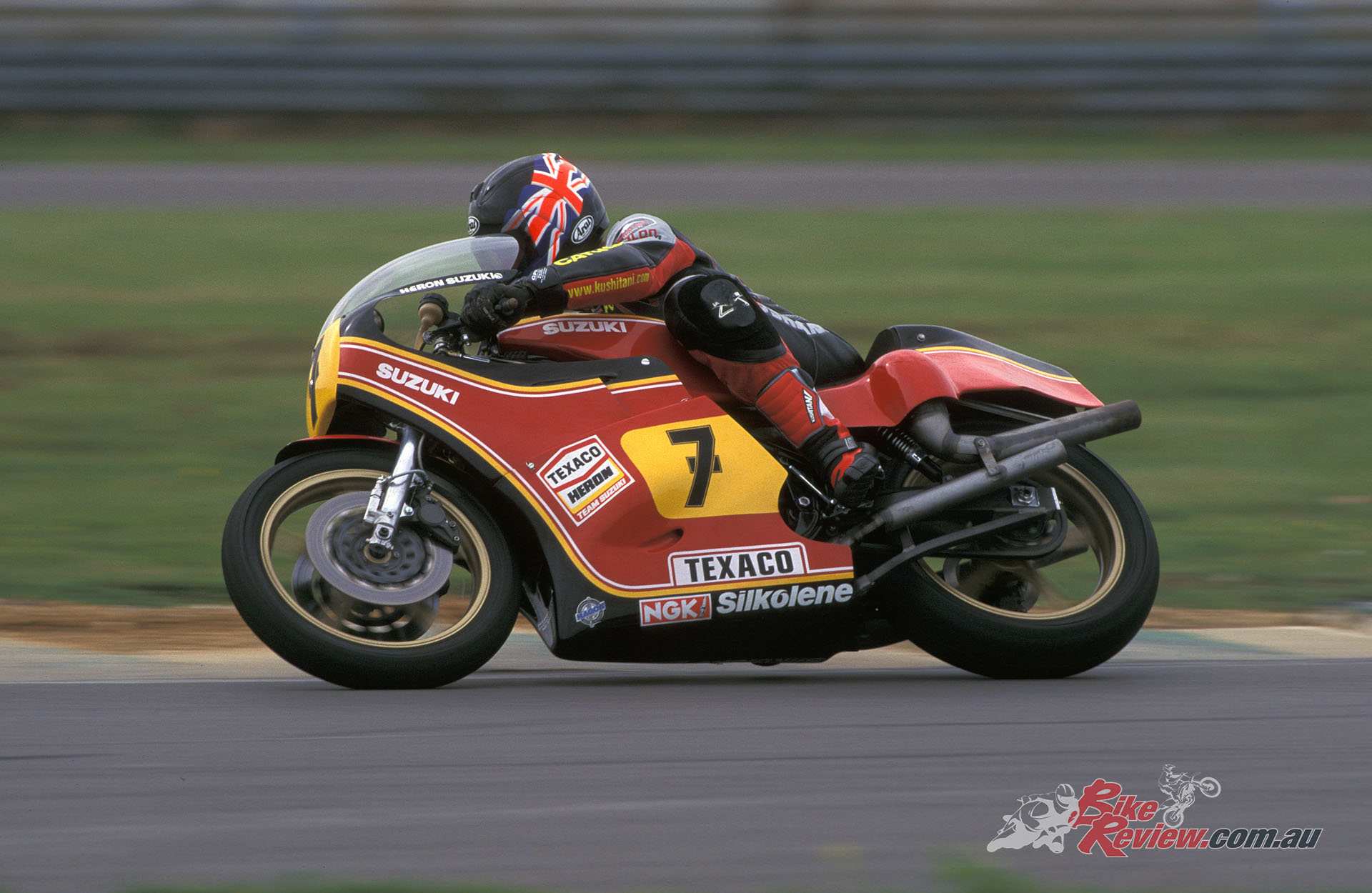
AC at the Coupes Moto Légende meeting at Montlhéry. The XR23B was originally believe to be a Sheene bike, but the records show it was a Hennen machine.
Barry Sheene: “No question, this was definitely my favourite bike out of all the ones I raced back then. It had loads of power and it was good fun to ride, especially at a big track like Ricard where you could really open it out. To be honest, it didn’t really accelerate a lot better than the Yamaha, just the power came in with such a rush you certainly thought it did! What was all wrong was the weight distribution – Suzuki hadn’t yet worked out that you needed more weight on the front wheel to stop it pulling wheelies all the time, so we did it for them – I had a ten-pound cast iron bar that I got from Steve Parrish, which we used to bolt to the front engine mounts, and that helped a lot, even if the Japs went bloody bananas when they saw this.”
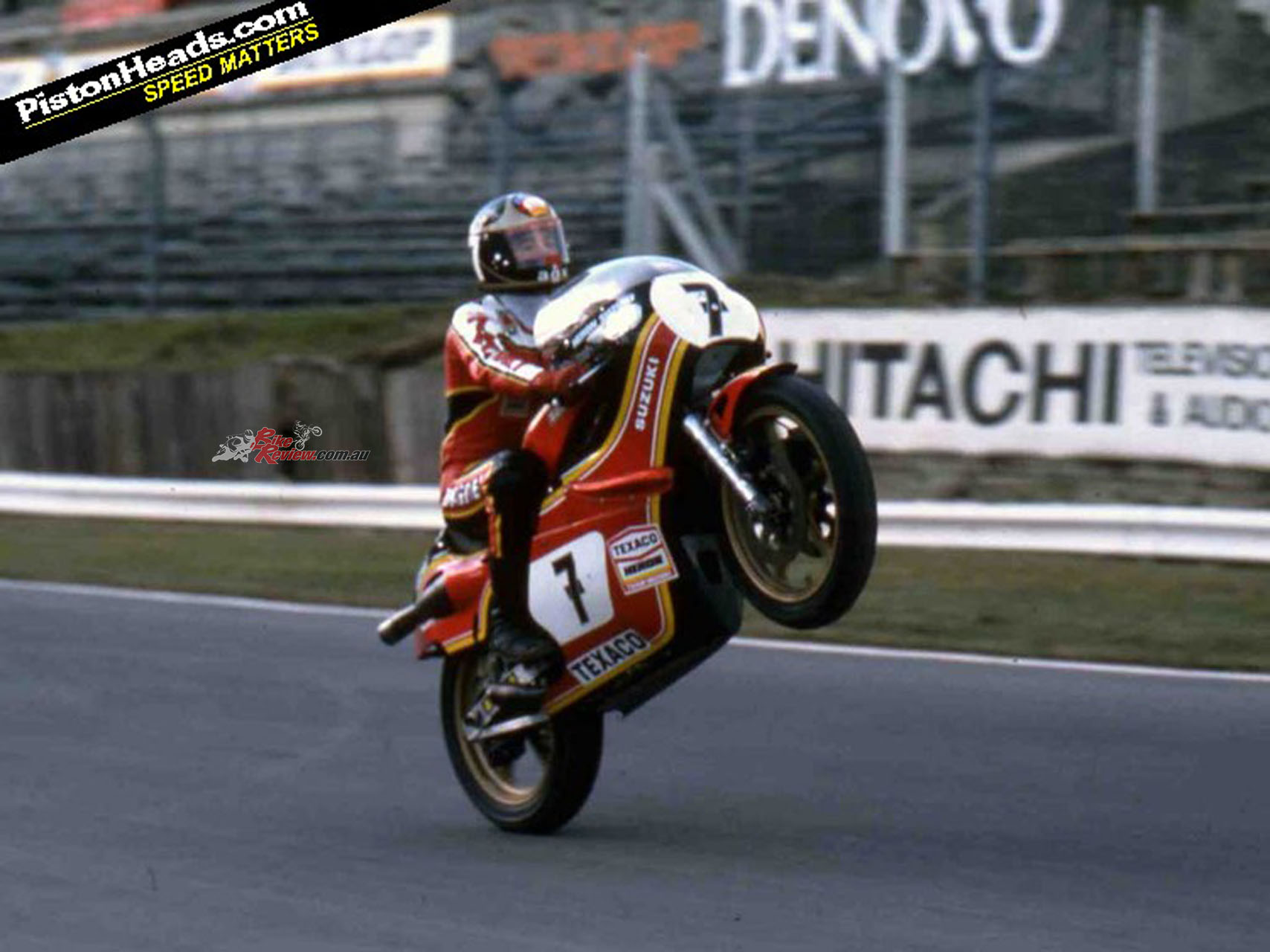
“No question, this was definitely my favourite bike out of all the ones I raced back then. It had loads of power and it was good fun to ride, especially at a big track like Ricard where you could really open it out.” said Sheene.
“There they’d been spending millions of yen and hundreds of man hours whittling away grams of weight with magnesium this and titanium that, and here we were stuffing kilos of lead back on to the thing to make it handle properly. Which it did, so they couldn’t argue with that – Pat Hennen and I were just about unbeaten on the bike for two years, I won back to back MCN Superbike titles on it, and generally did what they wanted me to do with it, which was to beat Yamaha and Kawasaki.”
“But the exhaust pipes that final year were a joke – I only did the Transatlantic with them, then I threw them away and put the old ones on again, because they were too uncomfortable. I couldn’t ever put my toes on the footrests, even though mine were about an inch and a half further forward than anyone else’s. I kept hitting my heel on the pipe, which just annoyed me so much I told Suzuki to bin them and put the others back on again. The Japanese didn’t like that either – but the difference in power was infinitesimal, and you had too much for the tyres to handle, anyway, so I told them what the hell, that’s the way I’ll ride it. But it was a lot of fun, once you realised the special technique you needed for it……”
“We always made sure we ran the rear slightly stiff, and on maximum ride height to promote an arse-up attitude to stop it sitting down too much under all that extra grunt on acceleration, but I didn’t take any weight off the rear, just added more to the front. Suzuki always had the weight distribution wrong all the time I was riding for them – in 1976-77 we’d add ballast to front of all the 500s to try to compensate for this, and that’s why I later got them to build the front radiator bike (the XR27BFR RG500, in 1979), to throw the weight further forward.
“Only, that way it had more drag, so it was down on top speed, plus they’d screwed around with the frame and stuck a 23-degree head angle on it, so it was dreadfully unstable, which together with the slower top speed is why it got dropped.”
Editor’s Note: If you are reading this article on any website other than BikeReview.com.au, please report it to BikeReview via our contact page, as it has been stolen or re-published without authority.

